By Tommy Clarkson from the May 2015 Edition
Rangoon Creeper, Quisqualis indica
Family: Vitaceae
Also known as Drunken Sailor, Burma Creeper, Indian Jessamine and Chinese Honeysuckle
Whenever I say this vine’s common name I can hardly but think of it as some vile and evil, fictional, nemesis created by Sir Arthur Conan Doyle for Sherlock Holmes, with the brilliant sleuth himself observing to his faithful sidekick, “Watson, I fear this looks to be the dastardly work of none other than the Rangoon Creeper!”
Well, in all reality, its Latin name “Quisqualis”, according to the South Florida Plant Guide, means “What is it?” and they assert that it is an apt “description of what your friends, family and passersby will exclaim when the beauty of this vine comes into its full glory in summertime.” I certainly don’t disagree!
The clustered, four to five inch (10 – 12.7 cm), starshaped blossoms of the Quisqualis indica are unique indeed and initially emerge white, then change colors to pink and, ultimately, take on a deep red hue, along with a delightfully aromatic, sweet fragrance. While most flowers fade in color with age, the Rangoon Creeper’s blossoms defy convention having their full array of colors present all at the same time for a most delightful and stunning display of yet another of Nature’s wonders.
As to that heavenly scent, stand down wind of them at nighttime as that is when the blooms’ toasted coconut fragrance is most wonderfully pungent.
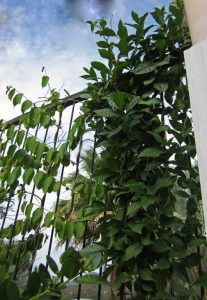
Beyond the flowers, the foliage, as well, is quite attractive consisting of elongated, yellowish green to bright, lance-shaped, leaves that can form a dense lush greenery.
When planting your Rangoon Creeper, keep in mind that it requires room to grow and needs strong support. . . as do we all! As a result of its natural make-up in the right locales its vines can reach up to seventy feet (21.3 meters) it is ideal for an arbor, pergola, gazebo, carport or patio lattice enclosure, trained along the roof line of an overhang or simply arched over a driveway. With its cascading blooms, graceful drooping branches, and slightly sweet scent of the blossoms, in such places as these, it’s a natural – or as we have effectively used ours, climbing up a tall wrought iron fence next to our entry.
When planting in a row covering a fence, place the plants four to five feet (1.2 – 1.5 meters) apart or from the nearest shrub or tree. Low growing plants can be situated close to its base once it reaches enough height for clearance and light.
A fast grower, the Rangoon Creeper which originated in the India, Indo-Malaysian and New Guinea area – can thrive in full sun to part shade and while losing some leaves during the colder times, it will return to its full glory in the springtime. If properly draining, it can handle in a variety of soil conditions.
When first planting, add rich, mulchy, top soil around the root ball and, of course, as we always do here in Ola Brisa Gardens, add estiércol de vaca (dry cow manure) to enrich the soil around the plant’s subsurface growth.
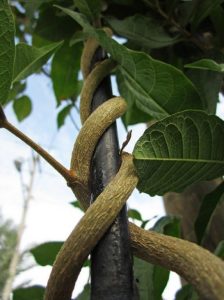
It likes to be watered on a regular basis, but wait a bit of time between waterings so as to allow the soil to dry out. In concert with this, fertilize twice a year (spring and fall) with a top quality granular fertilizer and keep in mind supplemental feedings, if you like, with bone meal and/or liquid fertilizer. This will encourage heavier blooming. But avoid fertilizers that are high in nitrogen as while this will encourage foliage growth it will not nurture the flowering we seek.
W. Arthur Whistler reports that “Various parts of the plant are used in herbal medicines in Asia, especially the seeds, as a vermifuge (expulsion of intestinal worms), but the plant can be poisonous” . . . so I encourage that you not employ them in your salads!
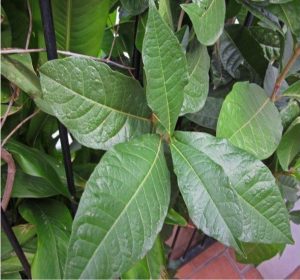
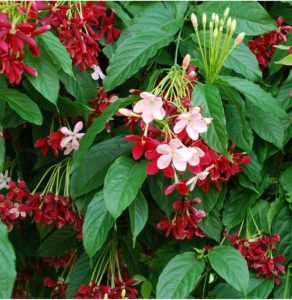
Download the full edition or view it online
—
Tommy Clarkson is a bit of a renaissance man. He’s lived and worked in locales as disparate as the 1.2 square mile island of Kwajalein to war-torn Iraq, from aboard he and Patty’s boat berthed out of Sea Bright, NJ to Thailand, Germany, Hawaii and Viet Nam; He’s taught classes and courses on creative writing and mass communications from the elementary grades to graduate level; He’s spoken to a wide array of meetings, conferences and assemblages on topics as varied as Buddhism, strategic marketing and tropical plants; In the latter category he and Patty’s recently book, “The Civilized Jungle” – written for the lay gardener – has been heralded as “the best tropical plant book in the last ten years”; And, according to Trip Advisor, their spectacular tropical creation – Ola Brisa Gardens – is the “Number One Tour destination in Manzanillo”.
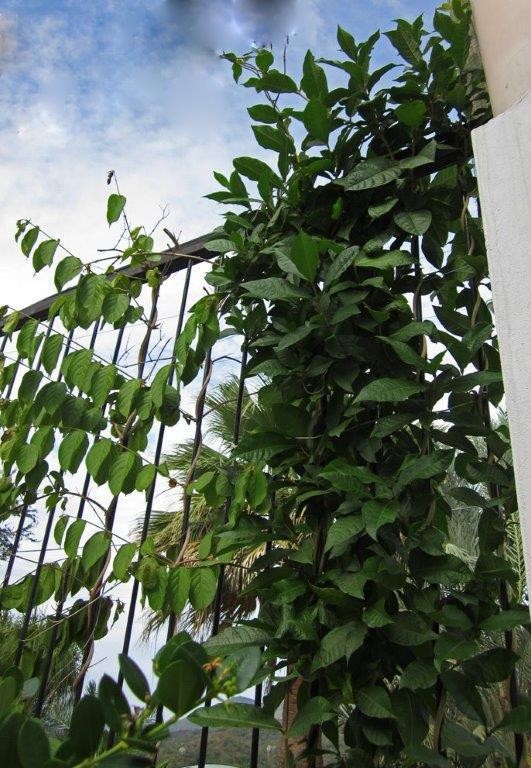

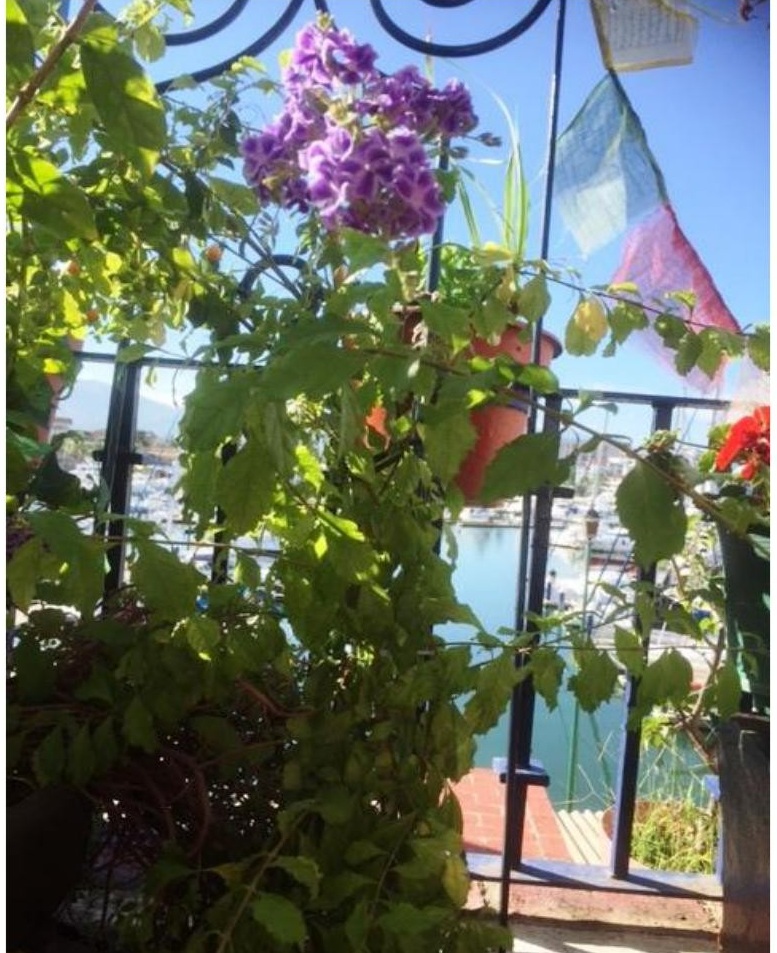


You must be logged in to post a comment.